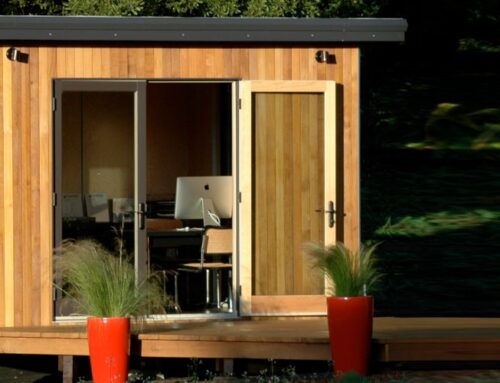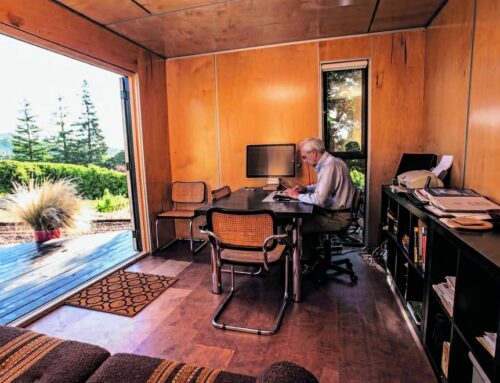The City of Livermore has produced a Document on ADUs
Summary:
What is a Secondary Dwelling Unit Permit?
A Secondary Dwelling Unit Permit is a permit to allow a second residence on an existing parcel. Secondary dwelling units may be attached to or detached from the primary residence, and are subject to specific criteria (LDC Section 6.03.120).
How long does the process take?
Secondary Dwelling Unit Permits are approved by staff. The review process can take approximately four weeks once a complete application has been received.
What documents do I submit?
- A completed application signed by the property owner
- Application Fee: $510
- An approved inspection report from the Building Official demonstrating compliance with the State Housing Code for the primary unit (Form included in this package)
- Colors and materials samples for roof, exterior paint, doors, windows, and window trim (Samples are only required if they differ from the primary unit)
- Three (3) sets of complete plan sets, including elevations, floor plans, square-footage calculations and site plan (Plans should include both the existing unit and proposed secondary unit)
- Electronic Copy of Proposed Plans
SECONDARY DWELLING UNIT REGULATIONS (LDC 6.03.120)
A. Purpose. To provide an opportunity for the development of small rental units, to provide relatively affordable housing for low- and moderate income individuals and families, to provide economic support for resident families and to provide rental units for the elderly or disabled while still maintaining the residential character of the surrounding neighborhood.
B. Requirements. One secondary dwelling unit per lot may be permitted in the City’s single- family residential zones including Planned Unit Developments and Planned Development – Residential zones, subject to the following requirements:
- Secondary units shall be limited to lots developed with no more than one existing dwelling unit.
- The secondary unit shall be designed so as to maintain the appearance of a single-family home. Colors, materials, roof form, windows and window trim shall match those of the existing primary dwelling unit.
- Secondary dwelling units shall not be for sale but may be rented.
- Total lot coverage and/or floor area ratio (FAR) shall be as required in the underlying zone.
- A secondary dwelling unit 640 square feet in floor area or less, excluding garage, or with a maximum of one bedroom, shall be required to provide one additional off-street, on-site parking space. For units greater than 640 square feet, excluding garage or with two or more bedrooms, two off-street, on-site parking spaces shall be required. These two spaces may be in tandem with each other, but not with the required primary unit parking spaces. No more than one space shall be located within the front yard setback, as regulated by the underlying zone.
- An inspection and report shall be obtained by the applicant from the Building Official to determine compliance with the State Housing Code for the primary unit, prior to submittal of an application for a secondary dwelling unit permit.
C. Attached. Attached secondary dwelling units shall be subject to the following criteria, in addition to criteria in Paragraph B.1. through B.6., above:
- New floor area to accommodate an attached secondary dwelling unit shall not exceed 30 percent of the existing dwelling’s floor area, or 640 square feet, whichever is greater. For purposes of calculating the 30 percent floor area, garage and accessory structures shall be excluded.
- An attached secondary dwelling unit shall be limited to a maximum of 1,200 square feet of floor area, excluding garage.
- An attached secondary dwelling unit shall be subject to the setbacks and height requirements of the underlying zone for the primary structure.
- Access to an attached secondary unit shall not be located on the front of the primary dwelling.
D. Detached. Secondary dwelling units detached from the primary residential unit shall be considered detached and shall be subject to the following requirements, in addition to requirements in Paragraph B.1. through B.6., above:
- A detached secondary unit shall not exceed 50 percent of the primary dwelling’s floor area, excluding accessory and garage structures.
- A detached secondary unit is limited to a maximum 1,200 square feet of floor area, excluding garage.
- A detached secondary unit shall be located to the rear of the primary dwelling unit.
- A single-story detached secondary unit shall be limited to 15 feet in height.The single-story unit shall be located a minimum of 10 feet from the primary dwelling and side and rear non-street property lines, except when the underlying zone of the primary structure is less restrictive, then the underlying zone setbacks may be applied.
- A two-story or second-story detached secondary unit shall be subject to the height and setback requirements of the underlying zone of the primary structure, as measured from the property line to the exterior wall of the second story. More….



Leave A Comment
You must be logged in to post a comment.